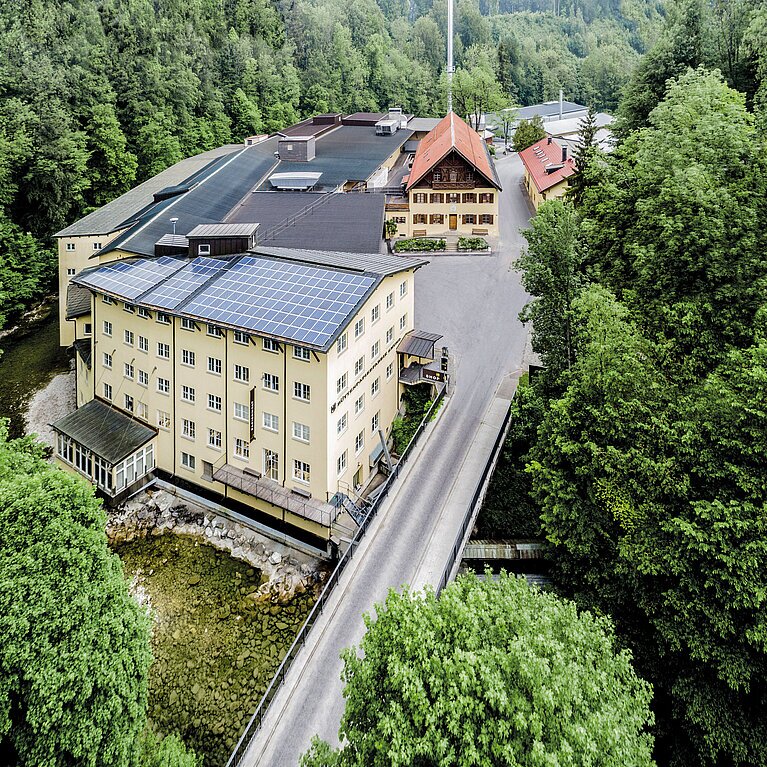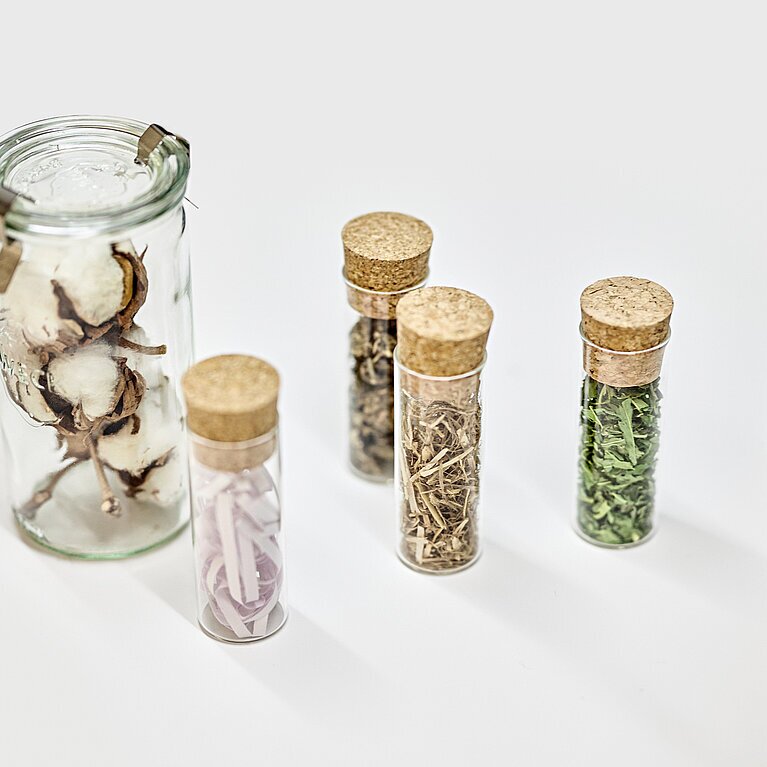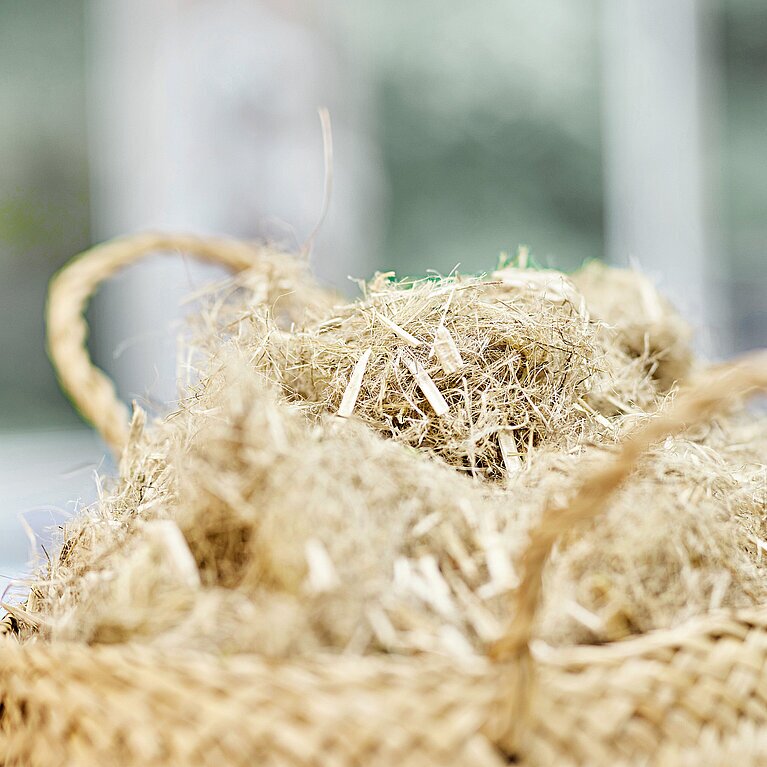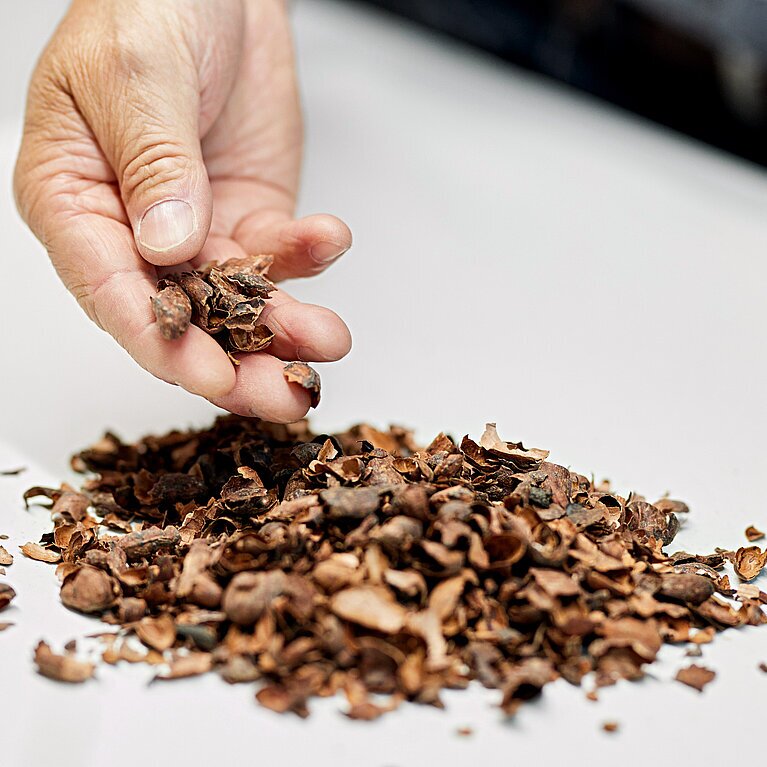

Paper is part of daily life. But it’s also long arrived in the world of high tech. That’s green high tech of course, which combines renewable raw materials to create ever-changing, ever-surprising combinations. Suddenly, paper carries the scent of chocolate or tea, has a rough, textured feel, is edible and bursting with flowers; and there are labels made from grass. The place where this new world of paper is taking shape is Greenfibra Labs, part of Gmund Paper. Project lead Dr. Katrin Kloth-Everding develops special types of paper to order. A solution that is both outstandingly sustainable and outstandingly versatile. “We’re constantly designing new products for our customers, alternative kinds of paper. It’s challenging work, but fascinating.” No wonder. Kloth-Everding, a doctor of chemistry, serves as a researcher, designer and inventor rolled into one and probably has the most exciting career in the entire paper industry. Alongside her colleagues in the laboratory and production facility at Gmund, she is breaking new ground. From fast-growing annual plants like hemp to production waste, her searching question is always “How can we use this to make paper for communication or packaging?” Kloth-Everding’s current favorite is chocolate paper, which is now in its third production run at the company. The whole production facility smells powerfully of chocolate because the paper itself contains inclusions of tiny scraps of cocoa husks, a waste product from chocolate manufacturing. Establishing the correct proportions of these ingredients in order to create good paper is a highly sophisticated art. In this case, the secret is recycled cellulose, its darker color underlining the chocolate element. These papers are created as collaborations with customers seeking a special paper with the twin aims of exploring every boundary of the possible, but also of teaming up to enhance sustainability. The customer’s task is not over once they place their order; they also need to ensure that sufficient quantities of the materials on which that paper is based – in this case, the cocoa husks – are delivered to Gmund Paper, the venerable paper mill at Lake Tegernsee. What appears to be mere waste is used to create stylish packaging and papers, a process that could hardly be more sustainable.

Clothing nature in paper
Coffee, chocolate, herbs, spices and teas are currently creating a buzz, and Greenfibra Labs clothes them in paper. “I don’t see any end to it. It’s such a vast area,” says Kloth-Everding, pointing to plant- or flower-based cosmetics as ideal candidates for special product packaging. These papers spark an instantaneous response from nose, eyes and fingertips. They are emotion in its purest form; they communicate sensory values. The appreciation of material and design that goes into them is instantly palpable. The most attractive form of environmental protection.
Various fiber samples in the lab

Gmund can hardly be accused of limiting its customers’ choice. There are over 100,000 different paper variations in the standard product range alone, each with its own color, grammage and texture. One or two new collections are generally launched every year, all reflecting the philosophy of sustainability, with FSC certification and sustainable manufacturing methods. Gmund’s Bio Cycle collection succeeded in replacing half of the wood cellulose fiber used with other natural materials including chlorophyll, straw and hemp. More and more of the company’s collections have cradle-to-cradle certification. And the effort of creating them is worthwhile, as customers increasingly ask for environmental certificates and labels and check whether the products they are considering are made in Germany. A mindset shift has begun. But sustainability is not a finite process. It will never come to an end; there are always tweaks, adjustments and opportunities for improvement, and Gmund Paper is no exception. The energy bought in by the company is 100 percent hydropower, supplementing its own solar panels and an ozone purification system. Gmund takes special care to ensure its waste water quality goes beyond the strict requirements of national law. “We use a lot of water,” admits Katrin Kloth-Everding. “But we try to reduce the particulate in our effluent to minimize pollution.” All new papers are created in a process of deliberation. Is this one really more environmentally compatible? Where can we source the fiber? What processing method will we need? What about energy consumption? And how recyclable is the paper or the material?
Fibrous material for research
Basic research is all part of the job
The first evaluation takes around two weeks, examining production issues as well as seemingly insignificant details like drying and comminution processes. Customers ordering two tonnes or more can commission an individual paper type – an offer mainly taken up by companies, which can enhance their image with custom colors and textures. Greenfibra Labs receives one or two products a month for laboratory analysis. Current research topics include products from peat bog plant fibers such as reeds, which are particularly suitable for thicker paper like corrugated card and egg boxes.
Kloth-Everding performs basic research as she seeks to discover which substances can become paper, and how. She tests the properties of fibers and creates paper samples to get a feeling for what is possible. The chemist starts by taking a multisensory approach. “I hold the material, look at it closely. How fine is the grain? Fine material will result in fine paper. Are there inclusions?” Her mind starts to race. “What can I combine it with? Which fibers can I use?” That increases the firmness. Once the visual and tactile characteristics are in place, she can embark on applied research into the fiber properties.
MOM, CAN THIS BE MADE INTO PAPER?
The sample paper has to be discussed with the production department. Could it cause problems for the machinery? What form will the test production take? The level of commitment is infectious; Kloth-Everding’s children have begun to collect pencil ends and shavings, or bring in plants from the garden and ask, “Mom, can this be made into paper?” These are small steps in everyday terms. But a clear shift towards bringing more sustainability to our lives.

